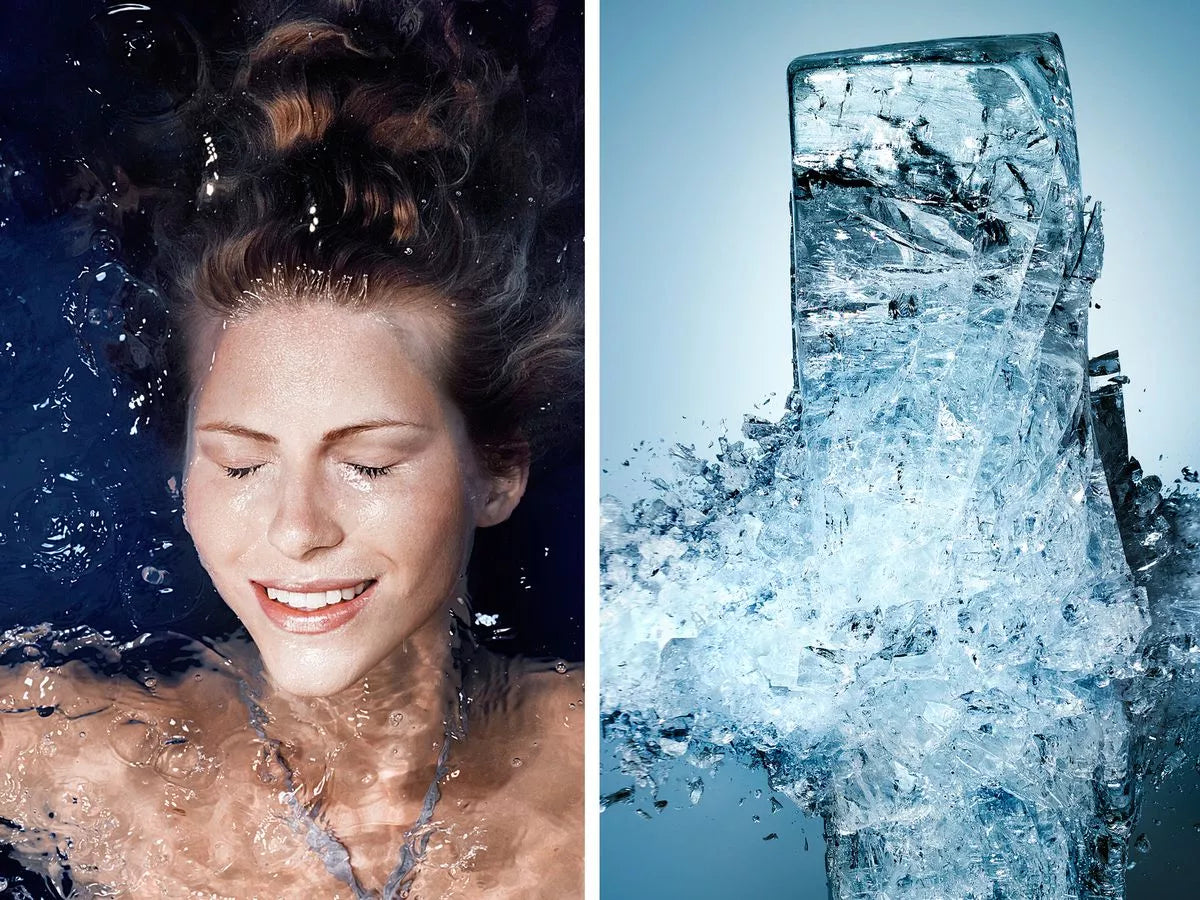Unlock the Benefits of Ice Baths: Your Ultimate Guide to Recovery and Resilience

In the quest for optimal recovery and performance, ice baths have emerged as a powerful tool for athletes and wellness seekers alike.
This ultimate guide will delve into the essentials of cold therapy, revealing the science behind ice baths and their multitude of benefits.
Whether you're aiming to enhance your athletic performance or simply looking to boost your resilience, understanding how to effectively incorporate ice baths into your routine can take your recovery to the next level.
Join us as we unlock the secrets of this invigorating practice and dispel common myths, equipping you with the knowledge to harness the full potential of ice baths.
View Our Luxury Cold Therapy Products ice baths: Your Ultimate Guide to Recovery and Resilience' style='display: block; margin: auto; max-width: 100%; height: auto;'>
ice baths: Your Ultimate Guide to Recovery and Resilience' style='display: block; margin: auto; max-width: 100%; height: auto;'>
Key Takeaways
- ice baths are a powerful tool for enhancing recovery and improving athletic performance.
- Cold therapy works by reducing inflammation and aiding muscle recovery through vasoconstriction and vasodilation.
- Proper technique is essential when taking an ice bath to maximize benefits and minimize risks.
- Many common myths about ice baths, like their ineffectiveness, are debunked by scientific research.
- Exploring alternative cold therapy methods can provide additional recovery options for health-conscious individuals.
Introduction to ice baths: Understanding the Concept
ice baths, often hailed as a cornerstone in recovery regimens for athletes and health-conscious individuals, encompass the practice of immersing oneself in cold water post-exercise to aid in physical rejuvenation.
The underlying science suggests that cold therapy constricts blood vessels, thus reducing metabolic activity, which diminishes swelling and tissue breakdown.
When the body warms back up, a reflow of blood occurs, flushing out metabolic waste and facilitating healing.
For athletes, the profound benefits extend beyond mere recovery; ice baths can enhance performance, alleviate delayed onset muscle soreness (DOMS), and imbue a sense of invigoration.
However, the method of taking an ice bath is paramount—beginning with gradual acclimatization, maintaining a water temperature between 50-59°F for 10-15 minutes, and focusing on breathing techniques to manage discomfort can optimize the experience.
It’s essential to debunk common myths that ice baths are only for elite athletes, as their advantages are accessible to anyone eager to elevate their wellness journey.
There are also alternative cold therapy options, such as cryotherapy and cold showers, which can provide similar benefits with varying levels of intensity.
Embracing cold exposure is not just a trend; it is a scientific approach to enhancing recovery and committing to a holistic health regimen.
The Science Behind ice baths: How Cold Therapy Works
ice baths, often revered in the world of sports and wellness, harness the power of cold therapy to significantly enhance recovery and performance.
At its core, the concept of an ice bath revolves around submerging the body in cold water, typically around 10 to 15 degrees Celsius, for a specific duration.
The science behind ice baths reveals that this chilling experience helps to constrict blood vessels, reducing inflammation and mitigating muscle soreness post-exercise, while also promoting faster recovery by flushing out metabolic waste.
For athletes, the benefits extend beyond mere recovery; consistent use of ice baths can enhance overall performance by improving muscle resilience and mental toughness.
To properly take an ice bath, one should follow a step-by-step guide: start with a gradual cool down of the body, ensure proper hydration, submerge for about 10-15 minutes, and focus on deep breathing to ease into the experience.
Despite their growing popularity, several myths and misconceptions abound regarding ice baths, such as the belief that they are solely for professional athletes or that they can replace rest.
In reality, incorporating alternative cold therapy methods, such as cryotherapy or cold packs, can also yield substantial recovery benefits, giving wellness seekers a variety of options on their path to optimization.
Embarking on the journey of cold therapy not only embraces scientific benefits but also inspires a mindset shift towards embracing discomfort to achieve greatness.
'The greatest wealth is health.' - VirgilView Our Luxury Cold Therapy Products
Benefits of ice baths: Recovery and Performance Enhancement
ice baths, once relegated to the realm of elite athletes, are now recognized for their profound benefits in both recovery and performance enhancement, making them a favored practice among wellness seekers and health-conscious individuals alike.
By submerging the body in icy water, athletes can experience significant reductions in muscle soreness and inflammation post-exercise, allowing for quicker recovery times and less downtime between workouts.
This cold exposure stimulates circulation as the body warms back up, effectively flushing out metabolic waste products and delivering vital nutrients to fatigued muscles.
Moreover, the practice can boost mental resilience and fortitude, qualities that are indispensable for athletes striving for peak performance.
Embracing the ice bath not only catalyzes physical recovery but also inspires a mindset committed to self-improvement and holistic well-being.
As you integrate this powerful tool into your routine, you’ll discover the invigorating shock of cold is a gateway to unlocking your full potential, giving you the edge you need to achieve your personal best.
How to Properly Take an Ice Bath: Step-by-Step Guide
Taking an ice bath can be an incredibly effective recovery tool for athletes and wellness seekers alike, but proper execution is key to maximizing its benefits.
To begin, fill a bathtub with cold water and add ice; aim for a temperature between 50°F and 59°F (10°C to 15°C).
Before you dive in, prepare your mind—remember, this experience is not just about enduring the cold but also about embracing the revitalizing effects it can have on your body and spirit.
Gradually immerse yourself by sitting down in the tub, allowing your body to adapt to the temperature.
Once you’re in, aim to stay submerged for about 10 to 15 minutes, focusing on your breath and mental clarity; counting your breaths can serve as a powerful focal point.
After maintaining your ice bath meditation, exit slowly, warm up with a light blanket, and hydrate to promote circulation.
Celebrate this accomplishment, not only as a recovery measure but as a step towards greater resilience and wellness in your athletic journey.
This routine can become a cornerstone of your biohacking toolkit, helping you unlock improved performance and recovery.
Common Myths and Misconceptions About ice baths
Despite the growing popularity of ice baths among athletes and wellness enthusiasts, several myths and misconceptions persist that can deter even the most health-conscious individuals from experiencing their benefits.
One common myth is that ice baths are only beneficial for professional athletes; however, evidence shows that anyone engaging in intense physical activity can reap the rewards of reduced muscle soreness and enhanced recovery times.
Another misconception is that ice baths can lead to long-term damage to muscles or circulation, when in reality, when administered correctly, they promote improved circulation and expedited recovery.
Some also believe that ice baths are a painful endeavor to be avoided, but many find the practice invigorating and even mentally stimulating, helping to build resilience and discipline.
By demystifying these ice bath myths, athletes and wellness seekers alike can embrace this powerful recovery method, equipping themselves to perform at their best and seize their physical potential.
Alternative Cold Therapy Methods: Exploring Other Options
While ice baths have long been touted as a staple for recovery and performance, it is essential to explore alternative cold therapy methods that can offer similar benefits to athletes and wellness seekers alike.
Options like cryotherapy quickly gained traction for their ability to deliver rapid cooling to targeted body areas, promoting enhanced recovery and reduced inflammation without the discomfort of full immersion in ice water.
Additionally, localized cold packs provide a more manageable and accessible alternative, allowing for precise application to sore muscles and joints.
Another innovative method worth considering is cold water immersion using natural bodies of water, which not only provides therapeutic cooling but also connects individuals to nature, enhancing mental well-being.
For those seeking a comprehensive cold therapy approach, combining these methods can create a powerful recovery toolkit.
Ultimately, exploring these alternatives empowers health-conscious individuals to make informed decisions on their recovery protocols and fosters a sustainable, balanced approach to their physical and mental health journeys.
Frequently Asked Questions
What are the primary benefits of taking ice baths?
ice baths primarily aid in muscle recovery, reduce inflammation, enhance performance, and improve mental resilience.
They are commonly used by athletes to speed up recovery after intense training or competitions.
How long should I stay in an ice bath?
It’s recommended to stay in an ice bath for about 10 to 15 minutes.
However, individual tolerance can vary, so it's essential to listen to your body and adjust accordingly.
Are there any risks associated with ice baths?
Yes, potential risks include hypothermia, frostbite, and cardiovascular strain.
It's important to consult a healthcare professional if you have underlying health conditions, and to use ice baths safely and in moderation.
Can ice baths be beneficial for non-athletes?
Absolutely!
ice baths offer benefits for anyone looking to reduce muscle soreness, manage stress, or enhance overall wellness.
They can be incorporated into a wellness routine by anyone interested in improving recovery and resilience.
What are some alternatives to ice baths?
Alternatives to ice baths include ice packs, contrast baths (alternating hot and cold water), cryotherapy sessions, and cold showers.
These methods can provide similar benefits and may be more convenient for some individuals.




